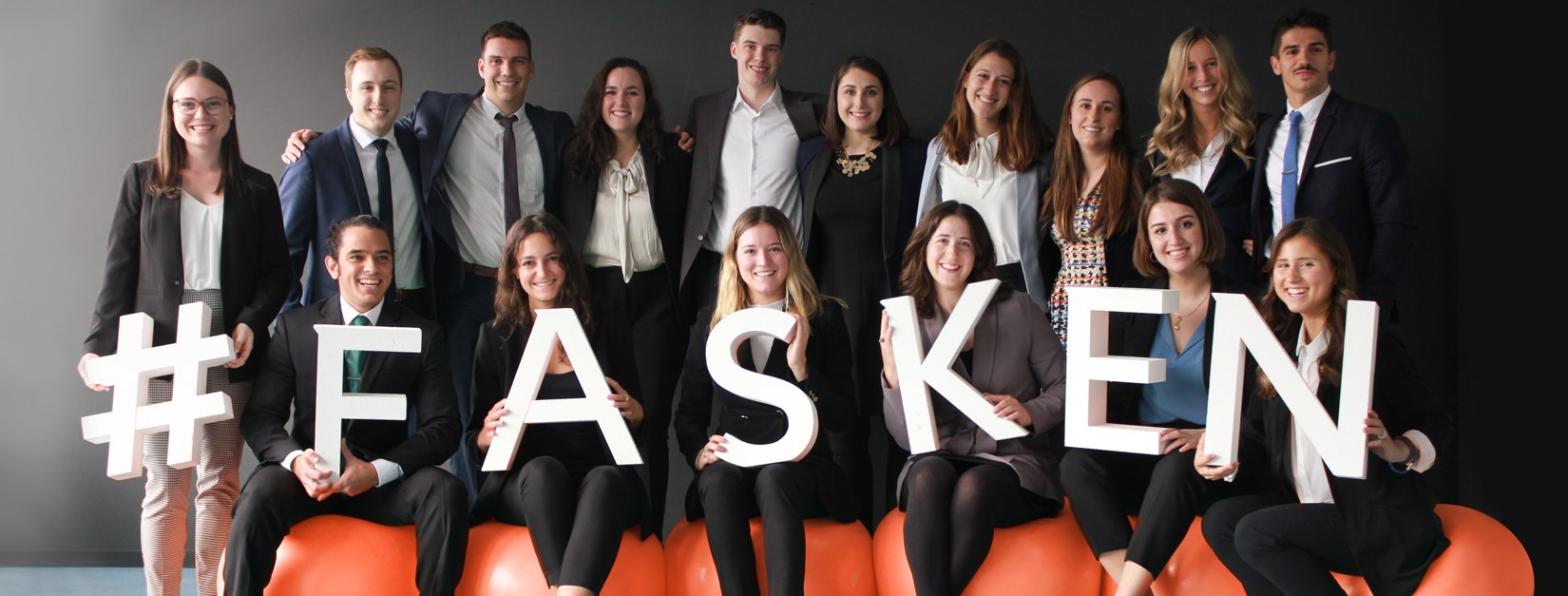Social media has allowed companies to reach and engage their clients for quite some time, yet some industries are more reserved than others. Like it or not, companies have no choice but to adapt – ushering a new focus on how brands engage with their clients – which has accelerated because of COVID-19.
Kenzie McGowan believes that companies need to embrace social media more than ever. She believes brands need to tap into their best advocates and empower employees to share content with their social networks. Meaning their employees embrace social as a method to engage their audience. As the Social Media and Content Manager at Fasken, a global law firm, Kenzie is leading Fasken’s employee advocacy strategy.

Change is difficult, but if anyone is confident in moving the needle, it’s Kenzie. She’s an experienced, savvy marketer who has spent most of her career working for large organizations such as Intact, Manulife, and Desjardins.
We recently sat down with Kenzie McGowan to discuss how law firms can embrace social media, especially during the pandemic. Our conversation touched on everything from LinkedIn Live and video content to employee advocacy and pandemic response.
Here are the five topics we covered:
- How conservative industries such as law can embrace social media.
- What goes into launching LinkedIn Live stream.
- How to create compelling video content.
- The benefits of employee advocacy.
- How COVID-19 has impacted their social media and content strategy.
How has Fasken, a law firm within a conservative industry, embraced social media so readily?
Fasken’s social media presence is still growing but that there’s a strong willingness to embrace social.
When Kenzie joined Fasken, she mentioned there were three categories of social-savviness that members sat in.
On one side of the spectrum, a group of lawyers who aren’t entirely on board with social. They don’t have an active online brand presence, nor do they embrace it as a platform to reach potential clients.
In the middle, a group that understands the importance of social media but isn’t entirely online. They know bits and pieces but they still are a bit hesitant.
Finally, another group of lawyers that are actively sharing content and understand the value. As Kenzie said, “there are many lawyers that just get it,” she talked about several members who have stepped up to be critical enablers.

Photo Credit: Fasken
In particular, she reflected on a conversation between her and one lawyer. “You always have one key enabler in your organization who is in an older demographic that gets it. As soon as the pandemic hit, within two weeks, he sent me an email telling me, ‘we have to do a LinkedIn campaign right now’ because that was the time to do it.” The campaign involved Fasken’s COVID-19 resource center, and surprisingly, it turned out to be the top-performing LinkedIn campaign.
Kenzie’s role is to shift the lawyers who fall within the less-savvy category to the other, especially now since social and digital platforms are the only option. She recognizes that it won’t happen overnight, but it is a work in progress.
How can social media marketers use video content to engage their audience?
Compared to creating written or audio content, the common belief is that high-quality videos require extensive resources and time. But Kenzie believes excellent video content doesn’t require a large budget. It’s a mindset that takes the old standard of needing meticulously filmed and edited videos and turns it squarely on its head.
“One thing social media marketers can learn from video is that it doesn’t have to be perfect. It doesn’t have to be movie quality.”
Instead of spending large budgets on highly produced videos with significant production costs, she believes in an authentic and personal approach that delivers a cost-effective but still engaging experience.
How does Kenzie do it? She shared her secret formula for video content with us. Her focus is on creating videos that are 30 seconds long or less. Her tip is to ensure the short videos drive to long-form content on YouTube.
Kenzie reflected on her previous video marketing projects and drew inspiration from Fasken’s 5G technology campaign when they created nine videos. Her recommendations include:
- Always have a branded introduction and outro.
- Avoid talking heads for the duration of the video.
- Use B-roll to add another dimension for videos.
Can you talk about your experience launching Fasken’s first LinkedIn Live?
When Kenzie first read about LinkedIn Live, she knew it would be a helpful platform for growing Fasken’s presence. Since most companies have shifted their focus towards webinars, Kenzie realized it would be a relevant move to use LinkedIn Live. She has a strong understanding of emerging technologies and learned that live streaming videos provided a far more engaging experience than webinars.

Photo Credit: The Globe and Mail
LinkedIn Live came at an excellent time for Fasken because of its involvement as the Canadian Olympic Committee’s official legal partner. Before getting on LinkedIn Live, there was a Pride month event happening with several Team Canada athletes and Fasken partners.
The combination of Team Canada, Pride month, and Fasken was something that Kenzie couldn’t let pass. Kenzie wanted to start their first LinkedIn Live a bang, precisely the content she was looking for. It targeted a broader audience yet still retained brand relevance.
When the COVID-19 pandemic happened, how did your social media strategy evolve?
As news about COVID-19 unfolded, Kenzie quickly understood the numerous implications that would impact the law firm. Kenzie explains that everything from labor and employment laws, implications for real estate leases, and other contractual obligations change daily.
COVID-19 had put a spotlight on the “act of God” notion, which encompasses the events that are unexpected and beyond reasonable human foresight and skill. As a result, many clients had to adjust to dealing with modifications due to evolving government regulations.
Like with many organizations, there were many questions and concerns, but not many answers just yet. In Fasken’s case, Kenzie said the firm acted quickly and created a COVID-19 resource center to help its clients manage through the evolving landscape and provide answers to uncertain questions.
She’s an avid Twitter user and was following the news closely. She knew long before everything happened, what this would mean for Fasken’s brand.
“That’s when I jumped on board and said we have to get our lawyers on social media because they’re not going to conferences or speaking engagements. This is where we need to make it happen.”
How do you see Fasken’s employee advocacy program evolving?
As part of Fasken’s social media marketing strategy, the firm has embraced employee advocacy for several years.
Kenzie believes the primary benefit of employee advocacy is when key stakeholders and employees see its value. “I’ve had certain lawyers email senior leaders asking why this content isn’t in PostBeyond? Just that action itself tells me that people see value in it.”
Fasken creates an abundance of content every month. They were producing 52 pieces of content for LinkedIn per month. However, they transitioned to creating 152 pieces of content per month due to COVID-19. Despite the initial focus on quantity, the team decided to scale back to tap into the firm’s members to amplify their content.
The quantity of content matters, but far more critical is the quality of the content irresistible for employees to share.
She believes the future of Fasken’s strategy is through individual LinkedIn profile development instead of branded channels. Mainly because of COVID-19, events and tradeshows are no longer options.
“We need to shift to promoting ourselves and our expertise and relying less on the business to help promote our expertise.”
Less content would be shared from Fasken’s branded channels, while more posts would be shared through members.
What’s your advice for anyone in legal services who wants to start an employee advocacy program?
For starting an employee advocacy program, Kenzie recommends beginning with the basics and knowing your audience. Law firms are experiencing a shift from traditional marketing to social and digital-first that elevates the client engagement. As a result, lawyers and partners alike have had to adjust.
As law firms embrace employee advocacy, Kenzie recommends deeply understanding your members and how social savvy they are. She says the most basic task you can start with is a LinkedIn profile analysis.
Secondly, start having one-on-one training sessions with each member and provide a learning environment to ask questions.
“Don’t try to boil the ocean all at once and take it one step at a time for each individual to get their full understanding and knowledge of social media.”
As a natural teacher, Kenzie enjoys working with her lawyers and employees to demonstrate their expertise and help each individual improve their social presence.





